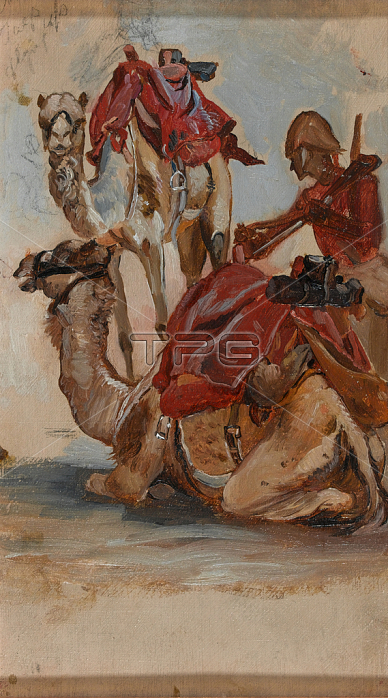
5925116 British Soldier, Camel Corps, Egypt, 1st Sudan War, 1885 circa (oil on panel) by Butler, Lady (Elizabeth Southerden Thompson) (1846-1933); National Army Museum, London; (add.info.: Study of a British Soldier with two camels, Camel Corps, Egypt, 1st Sudan War, 1885 circa. Oil on panel by Mrs Elizabeth Butler (1846-1933) (later Lady Butler). Camels were first domesticated in Arabia over 4,000 years ago. They provide meat, wool, milk and fuel (their dung can be burnt). Because they are so well adapted to desert conditions, are strong and can walk for miles a day, they have been vital beasts of burden in hot countries: the one-hump Arabian camel or dromedary was used as a pack animal by the British and Indian Armies for many years. Camels have also been used to carry troops at times and, having the advantages of speed and manoeuvrability, they were ideal for surprise attack. Having charged up to the enemy, their troops would then dismount to fight as infantry. In 1884, a British Camel Corps was formed for the Gordon Relief Expedition to the Sudan, as seen in this picture. In 1915 the Camel Brigade (later the Imperial Camel Corps), made up of British, Indian, Australian and New Zealand troops, was raised for action in the Middle East. Despite their advantages in desert conditions, camels are often difficult to handle, with bad breath and a tendency to bite.); by National Army Museum .
| px | px | dpi | = | cm | x | cm | = | MB |
Details
Creative#:
TOP27773280
Source:
達志影像
Authorization Type:
RM
Release Information:
須由TPG 完整授權
Model Release:
No
Property Release:
No
Right to Privacy:
No
Same folder images:

 Loading
Loading